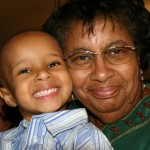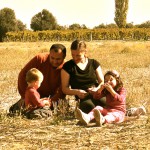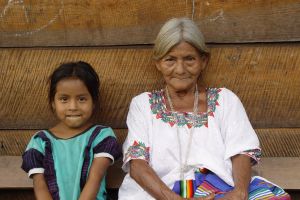By Kathryn Abbott, API Leader. Kathryn led an API Support Group in Skagit County, WA, in 2011-2012 and then served as a Co-Leader for San Diego County API in 2012-2013. She plans to start a new API support group in Norfolk this year.
 Both the joys and the challenges of parenting provide parents opportunities to grow and develop into our best selves. As we undergo this process, we are the model for our children, leading by example and showing them our core values.
Both the joys and the challenges of parenting provide parents opportunities to grow and develop into our best selves. As we undergo this process, we are the model for our children, leading by example and showing them our core values.
For families in which one or both parents serve in the military, there may be a set of unique circumstances that shapes some of those joys and challenges. These circumstances may include moving (on average every two to three years), deployments or long separations, being far from family and friends, interrupted relationships with health professionals, changing schools and jobs, making new friends and finding community, just to name a few.
In my family, my husband serves in the military and I am a stay-at-home parent. We have found that using API’s Eight Principles of Parenting has helped us more easily navigate the life changes that come with serving in the military. It has also helped us maintain consistency for our children during times of change and stress in their lives, leading to more secure attachment. Many nonmilitary families also face the challenges of moving, being far from family and friends, or having to parent separately, so it is my hope that this article will be helpful to military and nonmilitary families alike.
Prepare for Pregnancy, Birth and Parenting
This principle addresses the need to be prepared for the experiences of pregnancy, birth, the postpartum period and ongoing parenting though all its stages. It encourages us to become informed about the choices we will make for our care during our pregnancy and birth, as well as to become familiar with the stages of child development.
As part of our preparation for birth, my husband and I took a birth class. During the class, we were asked to do a drawing exercise that led us into labor and birth and then from birth into the postpartum period. When I looked up during my drawing, I saw that my husband was finished with his picture, while I was only about one quarter of the way done. We had a chance to talk about this difference. “I will be getting ready for and then going on deployment three months after our baby is born, so my postpartum experience won’t be long,” he reminded me. Oh, right. For a large part of our newborn’s life, my husband would be working 10-12 hours a day, six days a week, getting ready for deployment, and then he would be gone.
As a military spouse, I am not alone in this experience; many parents are home alone for long days caring for their families or are parenting solo while a spouse is deployed. Many members of the military miss the birth of their child, or they may miss most of the pregnancy and make it home just in time for the birth.
Part of working with this challenge is being prepared for it. Talking about expectations, seeking out the support needed during these times, and finding ways to involve the physically absent partner in the experience of the pregnancy or birth are all strategies families can use to be better prepared for the many transitions to come.
In families in which one parent may be absent from the children for months, understanding child development is vital. For example, the 18-month-old a partner returns home to will be quite different from the 1-year-old he or she left. For the partner at home, sharing the development of the children through emails, letters, phone calls, texts, Skype or Facetime can be very helpful for the parent who is away.
Feeding With Love and Respect
This principle encourages us to meet our children’s need for physical nourishment throughout their lives. Preparing nourishing meals and developing mealtime rituals can be a wonderful way to provide consistency and connection even during the transitions military families must face.
Our family has used our mealtime rituals of sharing meal preparation, eating together as a family and saying a blessing at meals as a way to nurture our whole family during moves, deployments and daily life. Even if our meal is a simple one served on a paper plate while sitting on the floor of an empty house, we come back to the security of preparing meals and eating together.
Respond with Sensitivity
This principle encourages us to respond to our child with sensitivity throughout his or her life. Whether we are holding our crying infant or sharing the joys and challenges of our teenager, we are building a relationship based on trust and empathy.
For families in the military, especially for the parent who is serving, it can be hard to hear our child’s sadness at leaving their home, their friends or perhaps even a pet behind. Choosing to respond to these feelings and expressions with sensitivity only strengthens our relationship with our child.
As the parent, we might need to take a deep breath and remind ourselves that we didn’t create this sadness for our child on purpose. Nor is it ours to take away. We can hold our child and say to her, “I am sorry we moved and your best friend is so far away.” And when she is finished sharing her feelings with us and is ready for a solution, we can help her write a letter or email, or make a phone call or Skype with that friend. And then we can support her through the process of making another new friend.
Use Nurturing Touch
Using nurturing touch is a wonderful way for all parents to help connect with their children. From babywearing to hugs, tickles and massage, there are many ways to meet your child’s need for nurturing touch.
Nurturing touch can especially be of value during times of change, which can be stressful even when we are happy about them. Remembering to give children extra time for snuggles or foot rubs at bedtime can help them relax in a new home or give them time to share their fears about a parent’s absence.
When a parent returns from a time away from the family, nurturing touch, whether through snuggles or horseplay, can be a wonderful way for the family to reconnect.
In our family, my husband and children have a goodbye/goodnight ritual that includes a hug, kiss, nose rub, butterfly kiss (using the eyelash on a check) and ends with deciding who has the hardest head. Of course, it is always our children who knock him down amid much laughter. This is something they will even do over the phone or Skype, and they love hearing him fall on the floor, even if he is 3,000 miles away.
Ensure Safe Sleep, Physically and Emotionally
This principle encourages us to meet our children’s needs for security, even at night. This will look different in all families and can include a variety of different sleeping arrangements. These arrangements can and should be flexible to meet the needs of the individuals of the family. Cosleeping (where the child is in the same room as the parents) or bedsharing (where the child sleeps in the bed with the parents) can be invaluable tools for the benefit of both parents and children. (Click to read more about API’s Infant Sleep Safety Guidelines.)
As a new mother, I shared a bed with my newborn to facilitate ease of breastfeeding and maximize my sleep and rest. My husband slept in the other room so he could be sure to have enough rest to fly safely the next day, and later he was on deployment. This sleeping arrangement meant I was better able to care for my infant and myself.
Bed sharing and cosleeping have continued to serve our family well, as they ease our children’s fears in new places, provide an opportunity for warmth and reconnection when my husband returns from deployments or trips, and often allow me, as the solo parent when he is gone, to get some much needed rest.
For families who find that separate sleeping places serve them best, providing assurance to a child through a bedtime ritual (and a nightlight if needed) and responding to their needs at night are ways that help children to feel secure throughout the night.
Provide Consistent and Loving Care
For military families in which the one consistent thing is change, this principle can provide us with a way to help ease some of the insecurities that can arise for our children and ourselves.
It our family, we planned that I would be the stay-home parent. We felt that having one consistent caregiver, especially as we moved, would be the most beneficial arrangement for our children. Since the birth of our oldest daughter eight years ago, we have moved four times. Being able to give our children consistent and loving care has truly been a gift to our family. There is no added sense of loss or insecurity that may come with changing child care as the result of a move.
For some families, both partners need or want to work, but they may also want to find consistent and loving care for their children. Some creative ways I have seen military families meet these needs include: having another family member, such as a grandparent, live with them and provide full-time care for the child; using an in-home nanny; or arranging for child care with a friend who stays home with his or her children.
For the many military parents using a local daycare as their child care option, finding ways to reconnect at the end of the day becomes essential. Taking time to spend some one-on-one time each day, giving extra hugs or having a special date with your child once a week can go a long way in creating and maintaining a secure attachment with you. Seeking out a child care provider who is consistent with your philosophy and acts as your partner in caring for your child is truly a benefit to the whole family.
Practice Positive Discipline
This principle encourages us to use discipline that is empathetic, loving, respectful and that strengthens the connection between parent and child. Positive discipline is the hardest for me when I am under stress. That stress can come, for example, at the end of a long day when there won’t be a partner coming home to relieve me, or when my children are balking at going to the dentist because they have never met this new dentist, or when my house looks like 143 boxes have just been unpacked and nothing has been put away (although really that’s just how it looks after the girls have been busy playing!).
Practicing positive discipline, even if you were raised with it, can be hard. For me, this is the area where parenting calls me to become better than I am right now and also calls me to be as gentle with myself as I can. When I remind myself that I value relationships over things, that I want my children to feel and know what it means to be respected, that I want to repair any disconnect my child is feeling with me, then I can help myself reframe whatever stressful situation I may be in and make the connection with my child.
Sometimes in order to practice positive discipline, I need to give myself a break. I simply tell the children, “I am feeling angry [or frustrated or upset] and I am going to go outside and take some deep breaths. When I come back we will figure this out.” I give myself that pause and time to de-stress so I can reconnect with the love I have for my children and then reconnect with them.
For the military parent, practicing positive discipline can have an added element of challenge since much of military culture is based on giving and following orders. This is an area where both parents will need to talk through how positive discipline will be used within their family and how to support each other in this practice.
Strive for Balance in Your Personal and Family Life
This principle comes last on the list, but it is really the foundation all the others. If you are not able to have time for yourself and time to nurture your relationship with your partner, it will be more of a challenge to nurture your children and your family.
For military families, this principle can have an added layer of challenge. Moving often requires rebuilding community: you must all make new friends and start over in favorite activities, and there may be new schools and new jobs. When you are far from family and friends and don’t have a trusted child care provider while your partner is away, finding time to recharge can be a challenge.
To help find balance in your days, consider:
-
Attending a support group meeting. Attending (or starting) API support group meetings has been invaluable for me. My children can come, and I get some time with other like-minded parents.
-
Arranging play dates. When my oldest was younger, I had three close friends who all had same-aged children. Once a week, all the children would go to one house for play time and snacks while the other three moms went to do whatever we wanted. Anything from cleaning the floors to doing yoga was on the list! Our children were safe and happy, and we each got a much needed respite.
-
Wake up early. I don’t wake myself early on purpose, but I find that if I am awake before my children, I have time in my day to read, check email or just think.
-
Celebrate the moment. Whether I am making myself a really nice cup of tea or spending 20 minutes on the phone with my sister, I recognize this time as time for me to recharge.
-
Make a date with yourself. When my husband is home, I go on a yoga date with myself and he has a father-daughter date with our children. Many gyms also offer child care if that is something you and your child are comfortable using.
Making time to nurture your relationship is key. Though you will have seasons in which you are more or less connected with each other, it is important to find ways to keep the relationship strong, especially when you have young children who have many needs. For military families, an added challenge to the parental relationship is the extended separations. These separations can add more stress to a couple in an already stressful situation. Again, being prepared, seeking out resources and using creative solutions can help you maintain your relationship. Simply making the time once a week (even if it is in the early morning!) to maintain your connection to your partner will support and sustain your relationship.
Practicing Attachment Parenting and striving to use API’s Eight Principles of Parenting doesn’t mean my life will be perfect. But I know that when my house is a mess, my children are adjusting to a new home with all that it entails, and my spouse has been gone for more days than I want to count, the tools we use to help maintain connection and build trust and empathy will help us through those times of challenge and those times of joy. These tools help me as I strive to be the person I want to be.
 The Girl Behind the Door by John Brooks chronicles a father’s experience from the adoption of his only child to her suicide in her teen years, including the exploration of the role of an attachment disorder.
The Girl Behind the Door by John Brooks chronicles a father’s experience from the adoption of his only child to her suicide in her teen years, including the exploration of the role of an attachment disorder. 








